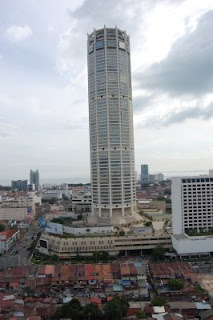International Conference:
Penang and the Hajj, 17-18 August 2013
Register before 9 August 2013
More at:
Penang Heritage Trust (PHT)
Contact Us:
Penang Heritage Trust
26 Church Street (26 Lebuh Gereja)
George Town
George Town
10200 Penang
Malaysia
Malaysia
info@pht.org.my
Tel: +604 264 2631
Fax: +604 262 8421
GPS Coordinates: 5.417915, 100.341557
Tel: +604 264 2631
Fax: +604 262 8421
GPS Coordinates: 5.417915, 100.341557
Good photos of Penang & Miscellaneous:
Photos & text by iGeorgetown
http://www.worldisround.com/home/brecky/penang/index.html
Masjid Kapitan Keling
http://www.penang-traveltips.com/kapitan-keling-mosque.htm
Penang hospitals
http://www.penang-traveltips.com/penang-general-hospital.htm
Penang Global City Centre (PGCC)
http://en.wikipedia.org/wiki/Penang_Global_City_Centre
Penang Monthly Archive
http://penangmonthly.com/archive/
Masjid Kapitan Keling
http://www.penang-traveltips.com/kapitan-keling-mosque.htm
Penang hospitals
http://www.penang-traveltips.com/penang-general-hospital.htm
Penang Global City Centre (PGCC)
http://en.wikipedia.org/wiki/Penang_Global_City_Centre
Penang Monthly Archive
http://penangmonthly.com/archive/
 |
| Old shophouses and godowns at Ghat Lebuh Aceh in George Town, Penang. These are now dilapidated but some have been restored and are in use. |
 |
| KOMTAR, once the only landmark of Penang. Now we also have the Penang Bridge. KOMTAR occupies the former site of the Chowrasta Malay School (before relocation to Jalan Hatin/Hutton Lane). |
 |
| Indian cloth shop in Little India, George Town in Penang |
 |
| Masjid Jamek Melayu Aceh, George Town in Penang |
 |
| Masjid as above |
 |
| The Quran School at Masjid Jamek Melayu Aceh, which evolved to become the famous Al-Mashoor School we have today. |



























